Montrealers are heading to the polls on November 2 to elect a new mayor. While the citizens have the democratic privilege of voting, the Dead certainly do not. As such, Haunted Montreal will be representing them and making demands to the mayoral candidates on their behalf. Generally-speaking, the Dead want two things: to be remembered and to be respected.
Welcome to the forty-sixth installment of the Haunted Montreal Blog!
With over 250 documented ghost stories, Montreal is easily the most haunted city in Canada, if not all of North America. Haunted Montreal is dedicated to researching these paranormal tales, and the Haunted Montreal Blog unveils a newly-researched Montreal ghost story on the 13th of every month! This service is free and you can sign up to our mailing list (top, right-hand corner) if you wish to receive it!
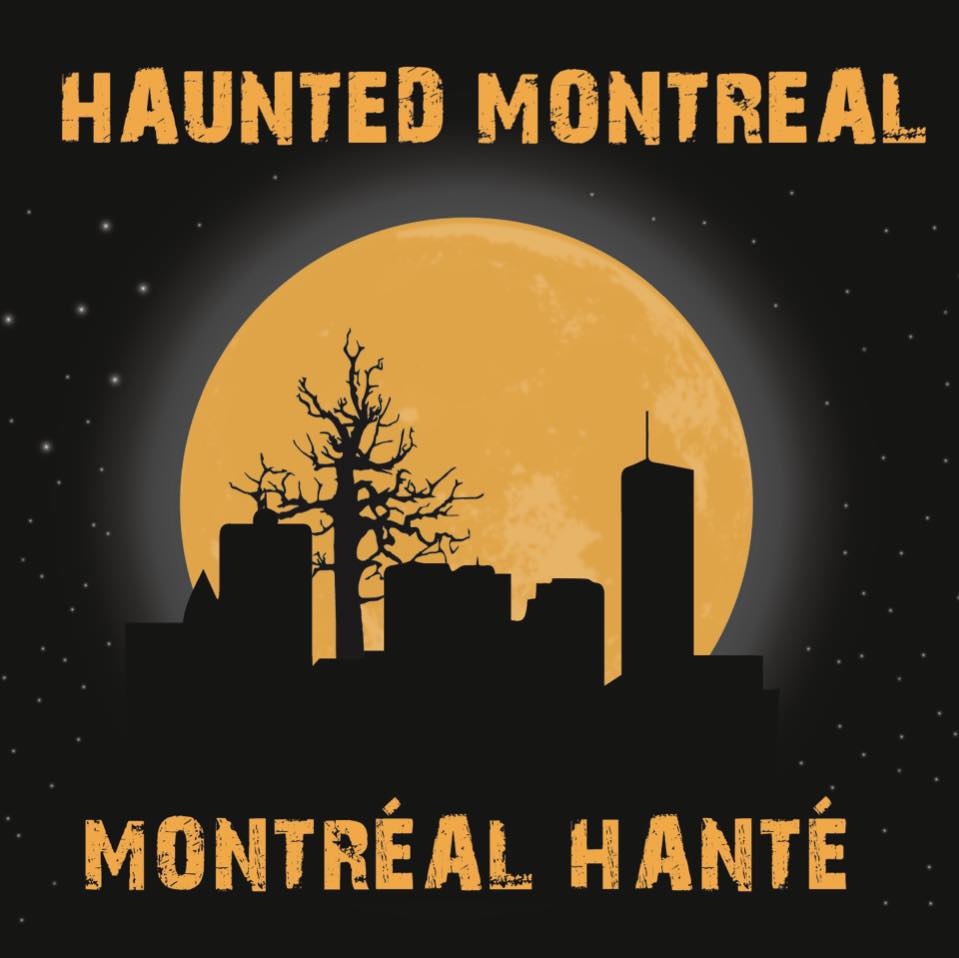
Firstly, Haunted Montreal is extremely proud to announce that we have won the prestigious Travel & Hospitality Award in the category of “Unique Experience of the Year 2019 in Quebec”!

To have won in Quebec, a nation that prides itself on its uniqueness, this is a very high honour indeed!
Quebec has a lot of interesting tourist experiences to offer, although many organizations are falling behind the international expectations of next-generation tourists. Recently, some of the older tourism structures have been identified as outdated and colonial and unable to cope with change in the 21st Century age of Truth and Reconciliation. One example that comes to mind is Montreal’s tour guiding cartel/monopoly, which has recently been identified as systemically racist and mis-representative of both the city’s population demographic and of Indigenous history and perspectives as well.
Haunted Montreal aims to stay ahead of the curve to offer our clients unadulterated history, authentic experiences, unforgettable excursions and opportunities to help shape Montreal’s Tourism Industry to be more inclusive, authentic and diverse. We are very proud that our work is being recognized at the highest levels of authority.
Travel and Hospitality Awards are “a recognition of the hard work and accomplishments across the travel industry. Recognizing hotels, tour companies, travel buyers and influencers across six continents, it is a stamp of recognition for long-standing customer satisfaction.”

Haunted Montreal is also pleased to announce that all of our ghost tours are in full operation and tickets are on sale! These include Haunted Mountain, Haunted Griffintown, Haunted Downtown and the new Haunted Pub Crawl!
This month, Haunted Montreal is extremely excited to report a very special event. Canada’s most haunted city, Montreal, is nervously awaiting its most infamous ghost. Prostitute Mary Gallagher was brutally murdered and beheaded in a filthy Griffintown tenement on June 27, 1879 on the corner of William and Murray streets. The case shocked Montrealers, especially when Mary’s best friend, Suzy Kennedy, was sentenced to hang for the gruesome crime. Since then, Mary’s headless ghost is said to return every 7 years on the anniversary of her death, still searching for her head.

Mary Gallagher’s next scheduled appearance is on June 27, 2019, the 140th anniversary of her murder. Professional actors and storytellers from the Haunted Griffintown Ghost Walk will tell the infamous ghost story, every half hour from 7- 10 pm free of charge, on the corner of William and Murray Streets. The story will be told in both French and English every 30 minutes on the hour. Tips for the actors are appreciated.
Haunted Research
The spooky corner of William and Murray Streets in Griffintown is without a doubt Montreal’s most haunted crossroads. Today the area is undergoing rapid gentrification and the site of Mary Gallagher’s brutal murder in 1879, once a ramshackle tenement house on the south-east corner, is now a vacant lot.
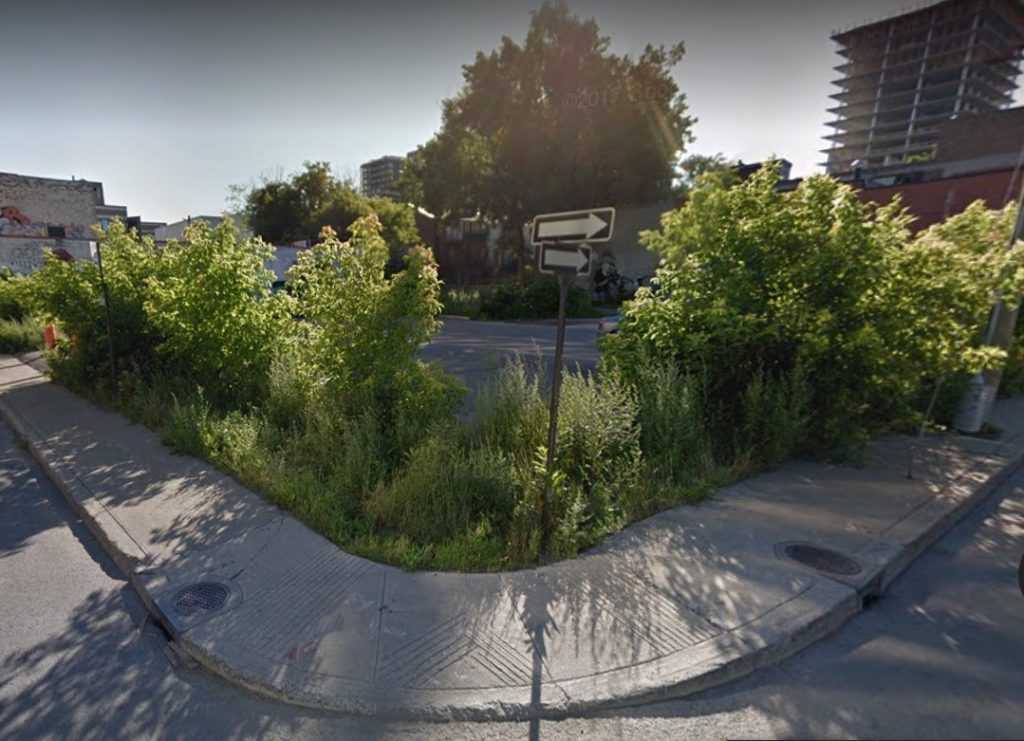
When the Griff was Canada’s most notorious shantytown, the corner was very much feared due to rampant reports that Mary Gallagher’s ghost would return every 7 years on the anniversary of her murder. In 1999, the late renowned Griffintown storyteller Denis Delaney told CBC’s Anna Asimakopulous that “children used to take her candy and little bags of treats, and things like that, and we’d leave them for her and then run away so she wouldn’t harm us.”
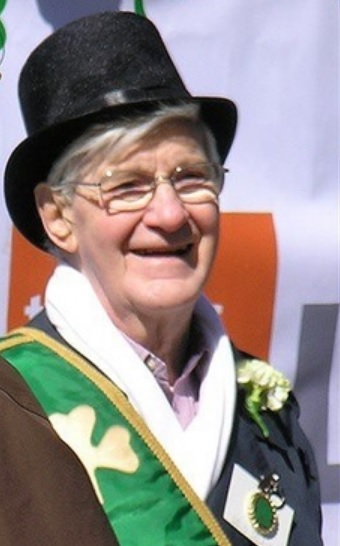
Parents would use the ghost story as a way of keeping their children obedient, warning that “Headless Mary” would get them if they didn’t eat their cabbage, do their homework, or return home on time.
In 2005, author and journalist Alan Hustak released The ghost of Griffintown: the true story of the murder of Mary Gallagher, the most detailed account of the murder and tormented spirit to date. Sadly, this book is out-of-print and publishers Véhicule Press were unable to re-publish it for the 140th anniversary of Mary Gallagher’s gruesome death, either in print or as an e-book.
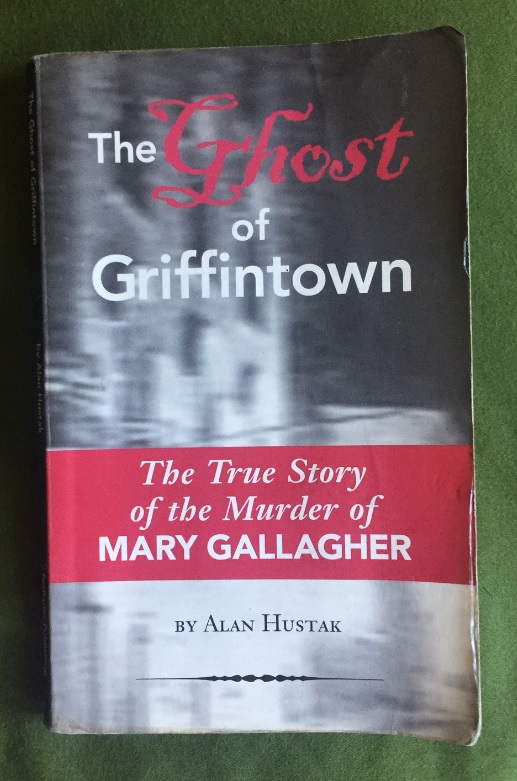
Griffintown has seen a lot of tragic history and is the ideal location for Montreal’s most infamous ghost story. The area where the Griff exists has always suffered hardship.
Montreal exists today on the un-ceded Kanien’kehá:ka (Mohawk) territory of Tio’tia:ke in northern Kanien’keh, also known as the Land of the Flint. Originally this was the location of a back-breaking portage trail used by various First Nations around the ancient island of Tiotà:ke’s rapids.

Geographically, today’s Montreal Island is the end of the line for any vessels coming down the St. Lawrence River because of the dangerous waters. For thousands of years, those wishing to continue had to unpack their canoes and carry everything for 13 kilometers over difficult terrain.
When the French colonized the island in 1642, they built the settlement of Ville-Marie in what is now Old Montreal. This triggered an all out and brutal war between the French colonists and the Kanien’kehá:ka (Mohawk) First Nation, who tried to reclaim their ancestral territory.

In 1654, Jeanne Mance, foundress of the Hôtel-Dieu Hospital, was granted 112 arpents of land by the leader, the Sieur de Maisonneuve. This area was named the Nazareth Fief, but due to the intermittent warfare, the colonists often huddled inside their fortifications for fear of being attacked.
Once a treaty called the Great Peace of Montreal was signed in 1701, the French began cutting down and uprooting the ancient and old-growth oak forest, which was converted into farmland.

The nuns called it Le Grange des Pauvres, or the “Barn of the Poor”, because the proceeds were used to feed the sick and the destitute at the Hôtel-Dieu hospital.
In 1760, this area saw action again. 2,000 British redcoats, under the command of General Amherst, marched from Lachine through the Nazareth Fief to capture Ville-Marie. The city surrendered without so much as a fight because authorities knew that the “New France” colonial project was effectively over.
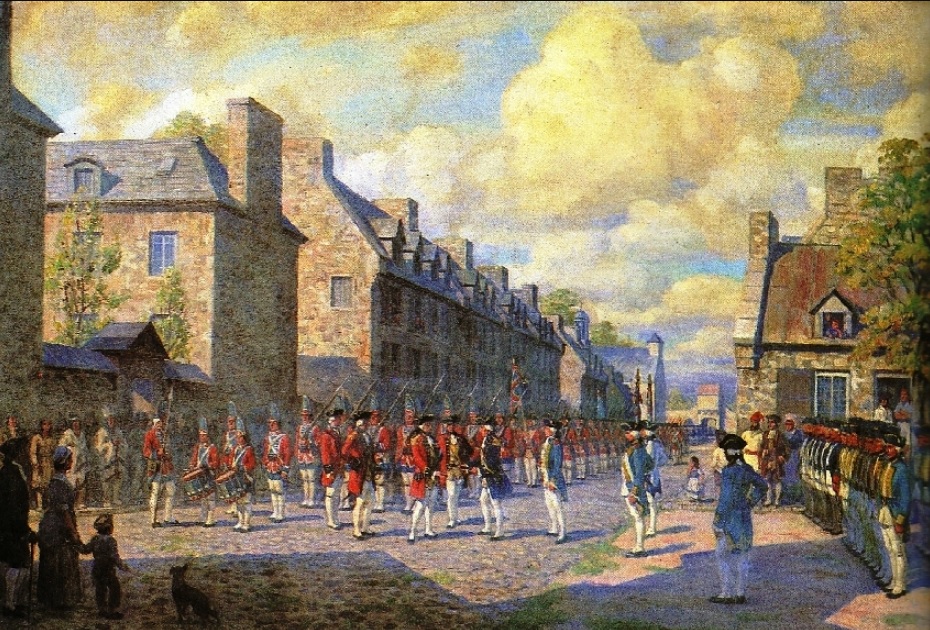
Under the British administration, things changed very quickly. The nuns leased the land to businessman Thomas McCord in 1791. With talk of building the Lachine Canal, the land increased in value. In 1796, McCord went away on business in the United Kingdom. In his absence, an unscrupulous business associate named Patrick Langan sold his land in 1803 to Mrs. Mary Griffin. As the wife of Robert Griffin, a soap factory owner, Mary Griffin, a shrewd business-woman, saw the opportunity to build homes in the area.
She immediately hired a draughtsman and surveyor named Louis Charland to create an urban plan to subdivide the area into streets, squares and building lots where houses could be constructed. Mary Griffin named a major thoroughfare “Griffin Street” and also named the neighborhood after her family.

When Thomas McCord returned, he found that his land now hosted a small community. He was furious and took immediate legal action. After winning his land back in court in 1810, McCord tried to erase everything named after the Griffin family. For example, he renamed Griffin Street to “Wellington Street”. However, much to the chagrin of Thomas McCord, the name Griffintown stuck in the public parlance.
The area changed again in 1847, when tens of thousands of dying Irish refugees, fleeing An Gorta Mór (The Great Hunger), poured into the city after dangerous Atlantic crossings in Coffin Ships.
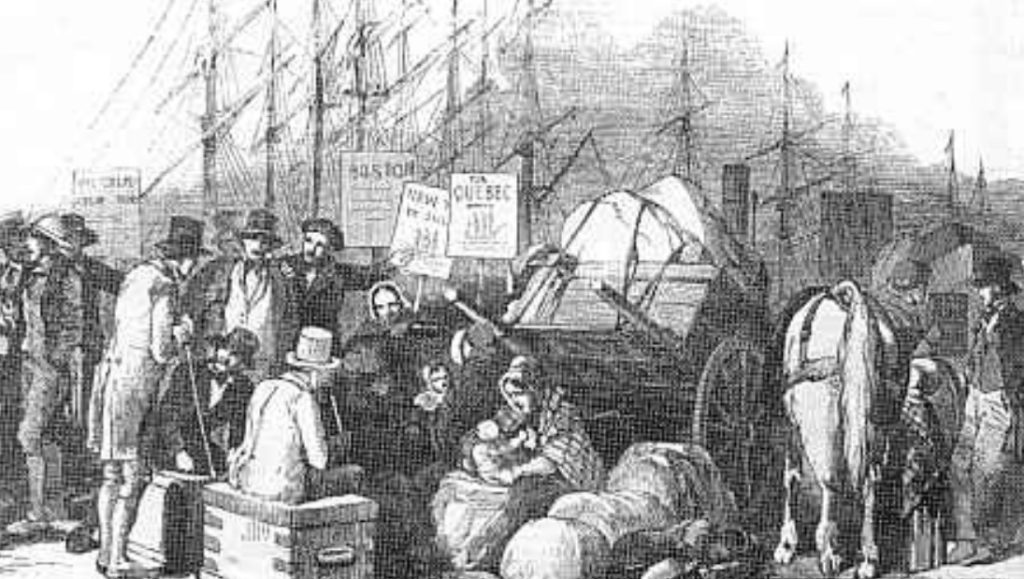
Approximately 50% of the survivors were totally impoverished and could not afford to continue westward. Thousands of Irish Famine refugees moved into the Griff and before long this area was transformed into Canada’s most notorious shantytown.
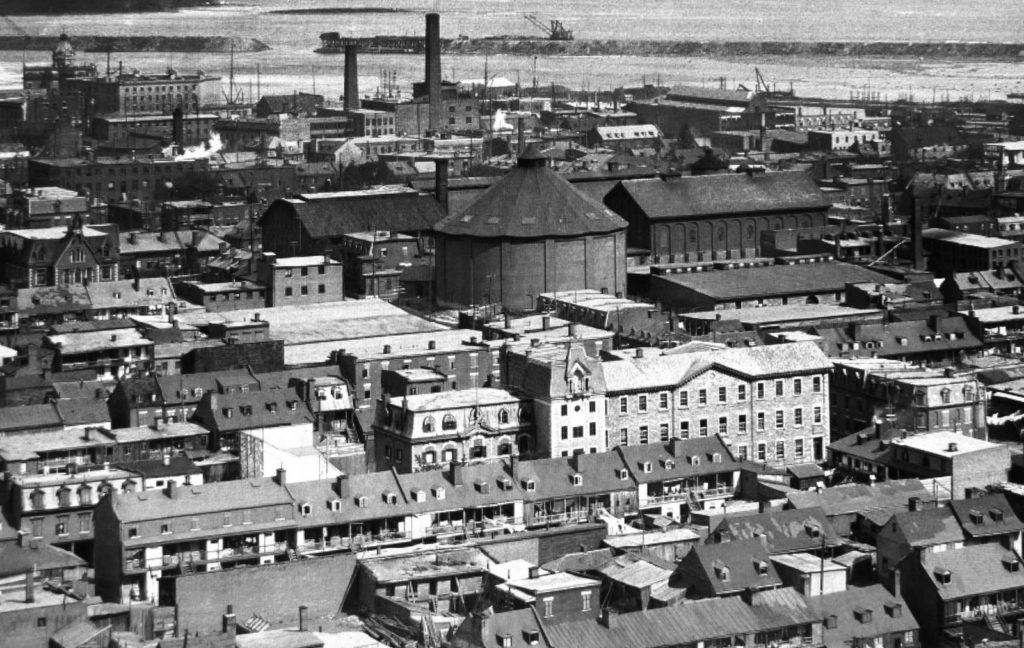
For over a century, the run-down, ramshackle neighborhood was characterized by grinding poverty, severe overcrowding, filth, alcohol, tragedy and violence.
With no running water and people using privies, the Griff was a breeding ground for deadly epidemics – cholera, typhus, typhoid, diphtheria, small pox and Spanish Flu – which killed off thousands of residents. The area has also witnessed countless floods, fires, industrial accidents, murder – and far, far worse!
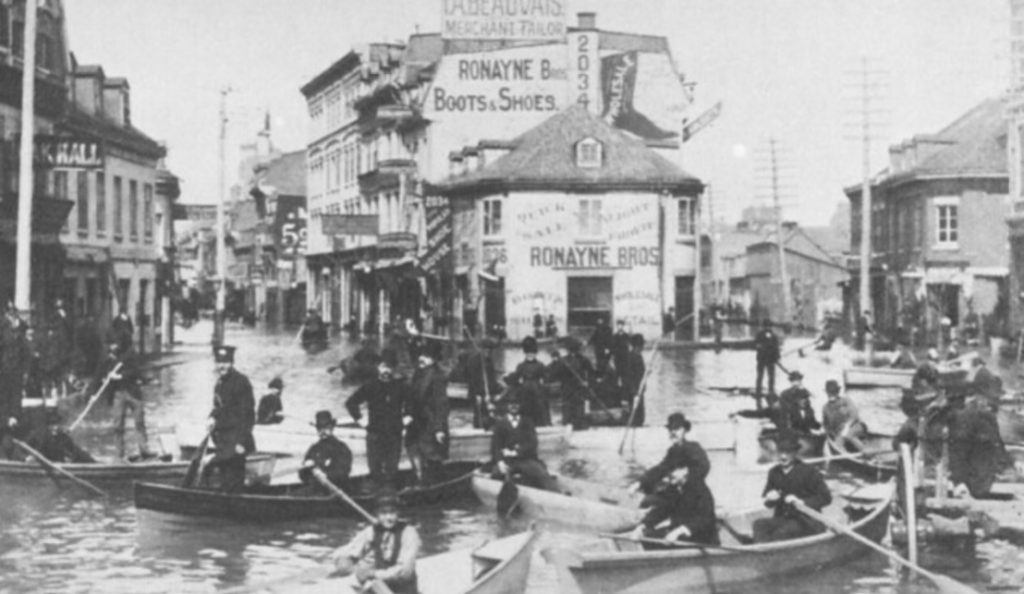
However, despite these many adversities, it was a tight-knit Irish neighborhood that that stood the test of time and supported its own.
Sadly, in 1963, with the stroke of a pen, the neighborhood suffered a final death-knell when it was rezoned by Mayor Jean Drapeau as a “light industrial zone”. Whole blocks of houses were torn down and residents were displaced. The neighborhood’s population dropped from a height of 70,000 people to less than 1,000 in just a few short years. The Griff was practically transformed into a ghost town! In 1970, St. Ann’s Church, the hub of the community since 1854, was unceremoniously demolished, despite pleas from the Irish community to at least spare the Presbytery.

Today, the ruins of the church can be seen in St. Ann’s Park.
Today, gentrification is transforming the old neighborhood as luxury condos go up in what was once one of the city’s most derelict areas. New residents, who usually drop a few hundred thousand dollars for a condo in Griffintown, are quickly learning that they may have bought more than they bargained for. While Mayor Drapeau may have displaced the residents of an entire neighborhood, the ghosts of the shantytown still remain.
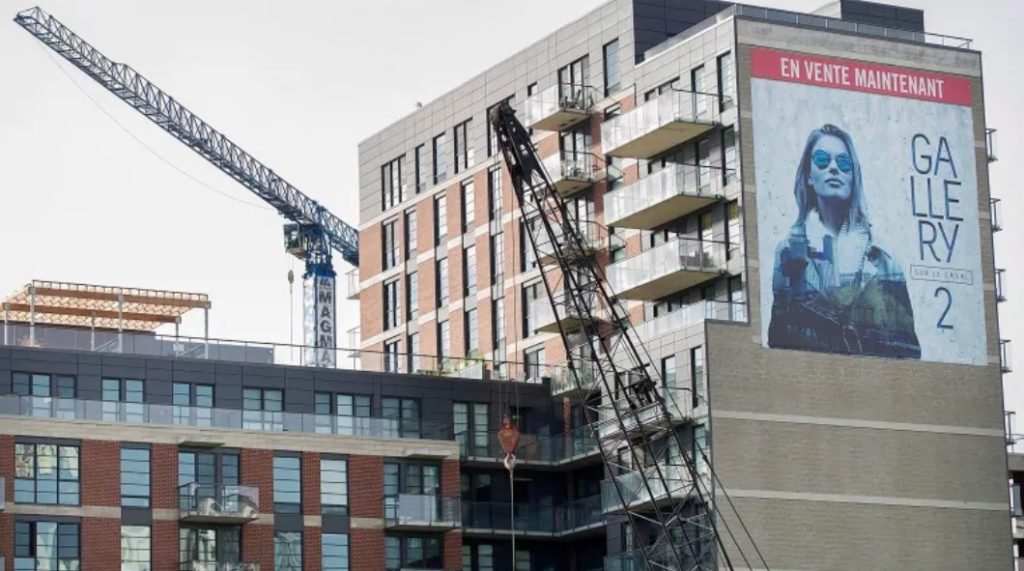
Many of the new residents report feelings of general unease, as though they are not welcome in the Griff. Some report feelings of being watched by unseen beings, whereas other report the sounds of phantom footsteps following them down the streets, not to mention the appearance of mysterious shadow creatures. Phantom church bells toll and rumours abound about the Ghost of Mary Gallagher. The sale of curtains is up, as many new residents feel as though someone or something is peeping through their windows at night.

The origins of the Mary Gallagher ghost story all started on the 24th of June, 1879. The city was bursting at the seams because it was St. Jean Baptiste Day, a huge religious celebration in Montreal.
That day, two ladies, best of friends, were out bar-hopping near today’s Place Jacques Cartier in what is now Old Montreal. The square bustled with economic activity because it was located beside the Montreal Harbour. Here you would find sailors, dockworkers, merchants, stevedores, citizens and immigrants, along with all of the riff-raff of the society – beggars, pickpockets, prostitutes, street urchins – you name it!
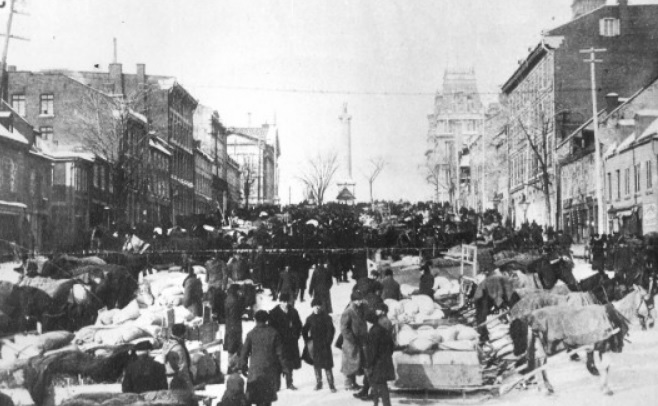
The ladies were Mary Gallagher, aged 38, and Susie Kennedy, aged 26. They were Griffintown-based prostitutes and they were trolling for clients, which is why they were bar-hopping. At first they visited Joe Beef’s Tavern, a real dive of a bar, but it was slim pickings. All of the men were either too poor or too ugly.
They continued on their way and while crossing today’s Place Jacques Cartier, they bumped into a strapping young lad! Michael Flanagan, aged 32 years old, was a handsome and muscular dockworker from the Lachine Canal.
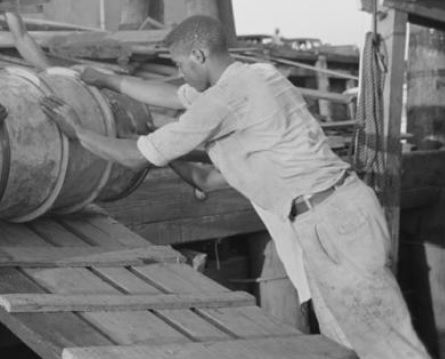
He was looking for company.
The ladies led him into a tavern and before long the three of them were drinking the afternoon away, with both ladies flirting with Michael Flanagan, each of them trying to secure him as a client for the night.
It appeared as though Michael Flanagan was becoming more and more interested in Mary Gallagher, despite the fact that she was a dozen years older than Suzy and had graying hair.
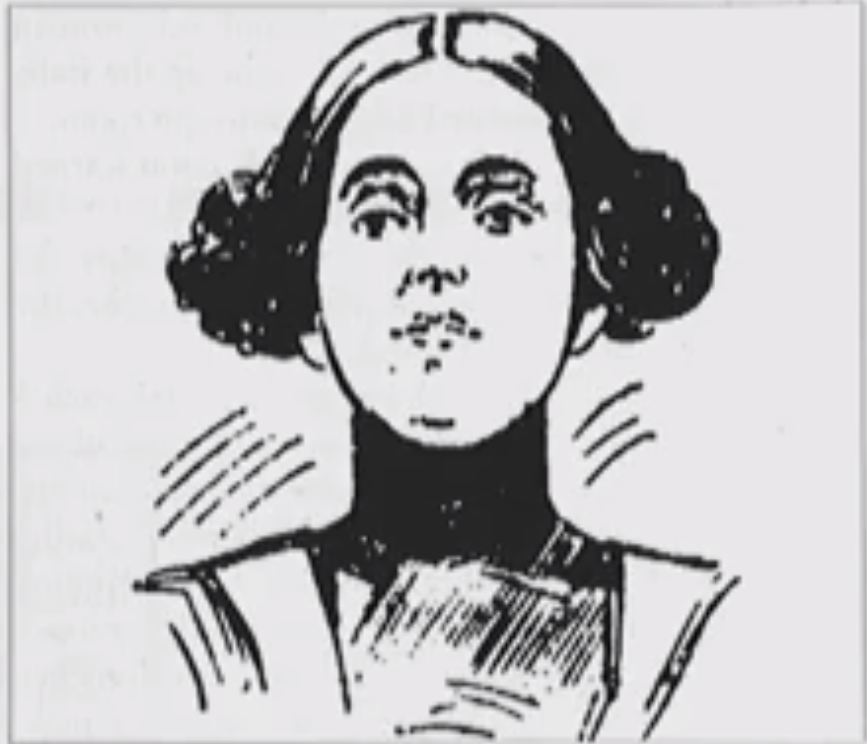
Mary was successful in seducing Michael Flanagan and brought him to a dingy flophouse, leaving Suzy to go home all alone, empty-handed to her 2nd floor tenement on the south-east corner of William and Murray Streets. According to the legend, Suzy was both angry and jealous at the fact that Flanagan chose Mary Gallagher over her.
After two days of debauchery, Mary brought Michael Flanagan to Suzy’s flat at 242 William Street, around 6 a.m. on June 27th.
Suzy lived above a widow named Mrs. Troy and her 10-year old son. Mary brought Michael Flanagan up the back stairway with several bottles of whiskey in their possession. Suzy wasn’t exactly thrilled to see them, but nevertheless joined them in downing three bottles of whisky before the 12 bells of noon.

At around noon, the woman living downstairs, Mrs. Troy, heard a loud bang that shook the whole house and cracked the plaster in the ceiling in two different places. Then she heard what sounded like a sort of a chopping noise. Whack! Whack! Whack! It lasted a full 15 minutes.
As Mrs. Troy pondered what was going on upstairs, she began to feel something dripping in to her hair. Thinking that it was not raining, Mrs. Troy reached into her hair and felt something warm and sticky. She quickly realized that this was blood dripping through her ceiling!

Mrs. Troy decided to send her 10-year old boy upstairs to see what the problem was. He came back down after about 30 seconds, as white as a sheet. Shaking, he blurted out: “Mummy, there’s a lady up there with her head off!”
That’s when Mrs. Troy decided to go for the police. However, the officer in charge that day explained that the police force didn’t have enough resources to investigate every disturbance in the Griff. This may be why it took the police a full 10 hours to arrive on the crime scene.

When they arrived, the first thing they noticed, lying next to the stove, was the mutilated corpse of Mary Gallagher. She had been hacked apart – 14 brutal blows to the body. Her right hand was severed at the wrist. Mary had also suffered a decapitation: her head was located in the ash bucket next to the stove, its eyes still open, staring up at the ceiling.
As for Suzy, she was found lying in her bed, covered in blood – it was all over her hands, clothing and the bed sheets. A bloody axe was found in a box next to the bed.

The police immediately arrested her.
Michael Flanagan was picked up by the police at a tavern on Nazareth Street later that evening. He claimed to have no recollection of the day on account of all the alcohol.
Needless to say, when it came time to try them in a court of law, Suzy was found guilty of murder and sentenced to be hanged by the neck until dead on December 5th of the same year. This cruel sentence was proclaimed despite the fact that the jury had recommended mercy.
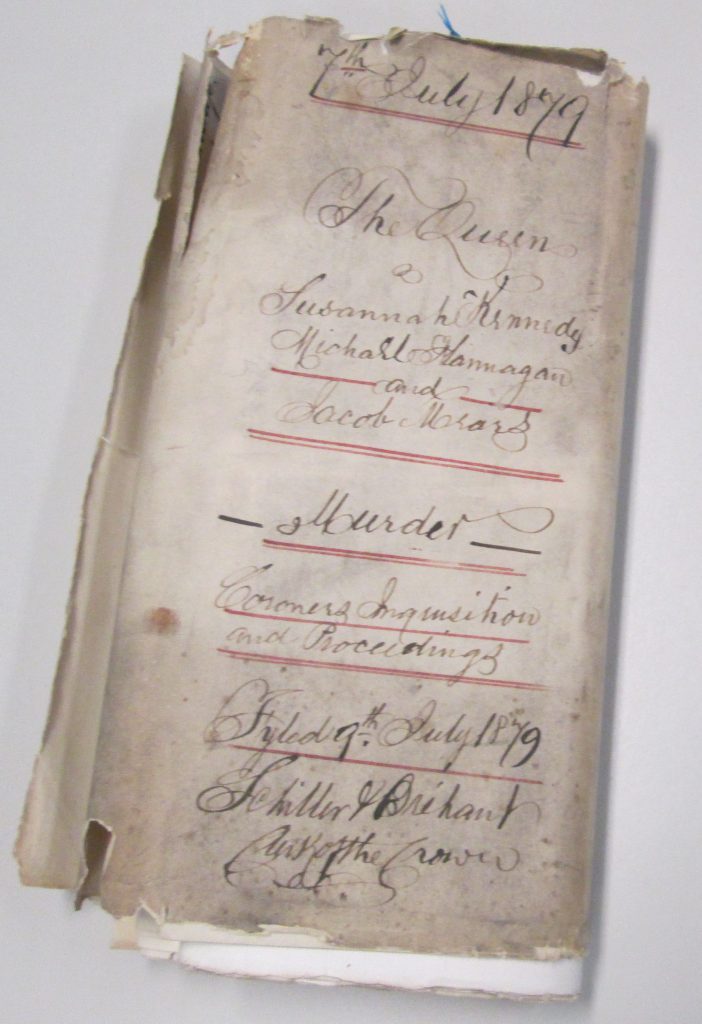
Michael Flanagan, on the other hand, walked scot free because there wasn’t enough evidence to convict him. Many of the citizens were shocked that a woman could commit such a violent crime, especially against a member of her own gender. Women in the Victorian era were often seen as delicate and defenseless creatures.
It is also important to remember that during the Victorian era it was considered very unpopular to execute women. One had been executed a few years earlier, and it did not gone down very well in the public opinion. Also, Suzy was clearly more than just a little bit mentally unstable, which is why the Prime Minister of the era, Sir John A. MacDonald, decided to commute her sentence from capital punishment to a lifetime of incarceration in the Kingston Penitentiary, in Ontario.

One ironic fact about the story is that on December 5th, 1879, the day Suzy Kennedy was originally to hang, Michael Flanagan perished after falling through the ice while working on the Wellington Basin. At the time, many Griffintowners speculated that Mary Gallagher’s vengeful spirit had pushed him off the dock and his drowning was the result of her ghost’s intervention.
Whatever the case, when Suzy arrived at the Kingston Penitentiary, the first thing the warden did was replace her name with a number, as they did with all the prisoners. Her number was 9677. The guards deployed 9677 to the dungeons, where they found a cell for her measuring two feet wide by five feet long.

She spent the next 11 years in solitary confinement in that jail cell, knitting and sewing things on behalf of the prison, like uniforms for the North West Mounted Police. Living in such dank conditions, Suzy contracted pulmonary tuberculosis, or consumption, and died in July, 1890. These things can happen when you live under the ground.
Suzy Kennedy’s body was almost certainly donated to the Queen’s University Medical Faculty, where the young students would have learned a thing or two during the autopsy and dissection.

As for Mary Gallagher, and this really is the most interesting part of the story, it is said that she returns, every 7 years, to the corner of William and Murray Streets. It is said that she returns for one reason and one reason only – because she is still searching for her head!
Her next scheduled appearance will be the 27 of June, 2019, and Haunted Montreal is busy preparing for her reception! Haunted Montreal is very proud to engage with the tradition of commemorating the anniversary of Mary Gallagher’s murder and ghost sightings every seven years.
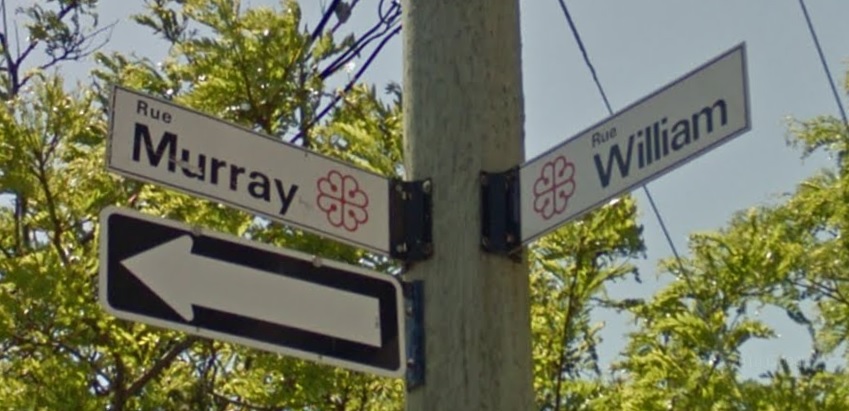
The first known sighting of Mary Gallagher’s ghost occurred just seven years after her murder. A local Griffintown hunchback, known only as Johnson, spotted her ghost on the corner of William and Murray Streets and proceeded to bolt to the Young Street Police Station. The officers on duty suspected the old hunchback was drunk and did not pursue an investigation.
According to journalist Alan Hustak, another sighting occurred in 1900, but the details are very slim.
On October 27, 1928 the now-defunct Montreal Star launched a sensational story with its the following headline: “Griffintown Claims Ghost of Murdered Woman Has Returned to Look for Head.”
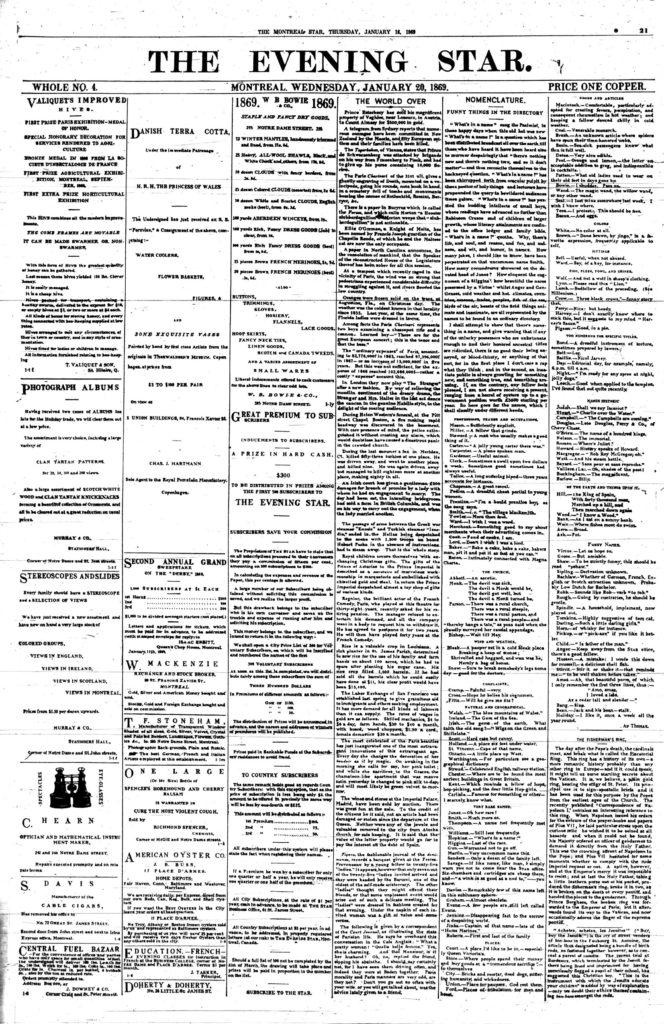
The journalist reported that “a bona-fide headless ghost, in the form of a woman, is said to have been seen by half a dozen different people on as many nights.” The Montreal Star continued: “Although reports of the first appearance of the phantom are conflicting, it seems that one night last week a woman rushed screaming into the police station on Young Street. She was pale and distraught and evidently bordering on collapse. ‘A ghost,’ she cried, ‘Up on William Street, Oh!’ Police searched the neighborhood with no results. That was the first time they had searched. It wasn’t the last. Hardly a night goes by without a wild and wearisome chase for the elusive phantom. The police are inclined to be incredulous. Not so the inhabitants of the place.”

According to The Montreal Star, “seven years after the crime, and every seven years since, the headless ghost is said to have returned to the spot of the murder and with low and awesome moans paced the streets at midnight supposedly searching for its head. This is one of the ‘seventh’ years.”
The reporter continued: “Partick Murphy, grocer, told The Star last night of the stories he had heard about the ghost. The grocery store is sort of a meeting place for the neighbourhood and all the tales are brought to the proprietor. Mr. Murphy explained that had the tales come from young fellows he might not have believed them, but that those who had seen the spectre were middle-aged and reliable men. ‘One of these,’ he said, ‘saw the ghost last Monday,’ and according to the grocer, has been in bed ever since.”

Denis Delaney claimed to have seen the ghost of Mary Gallagher on three separate occasions. He spotted her first in 1937 when he was just a boy of four years old. She allegedly took a blanket off his bed. In 1956, he saw her spirit again on Gallery Square. Delaney told journalist Alan Hustak that he “was walking down the street and this apparition appeared and it pointed to a tree.” He went to the tree and he pulled out an amber necklace and when he turned around, the apparition had vanished. Delaney knew right away that it was Mary Gallagher’s necklace.

On the anniversary in 1991, Father Tom McEntee, a Roman Catholic priest who had spent his youth in Griffintown, began the tradition on the evening prior to her death, June 26th, by holding a mass for the deceased prostitute at the Benedict Labre House. The mass was held in 1991, 1998, and for the last time in 2005. Father McEntee passed away in 2008. Today, Concordia University’s Irish Studies Program has a Reading Room named in his honour.

According to lore, 1998 was an exceptional anniversary for sightings. On that occasion, Delaney claimed that, by the light of a full moon, he had “looked up one night and saw a house appear” at the corner of William and Murray Streets. Today a vacant lot, this is where the murder occurred in 1879, when there were ramshackle tenement homes on the site.
He explained: “In the yellow light through the window upstairs, like a lamp…I saw a figure standing there, and it asked me, ‘Will you help me look for my head? I said ‘Yes’, and then she asked me to close my eyes, and I could feel something, like a rising up around me, and when I opened my eyes, the house had vanished and she was gone.”
According to Barbara Smith, author of Great Canadian Ghost Stories: Legendary Tales of Haunting from Coast to Coast, another sighting occurred that night in 1998.

Smith explains that following Father McEntee’s mass:
“A woman lingered on the spot on William Street where the murder had taken place. The woman called out Mary’s name and asked if the murdered soul was present. Moments later, the air grew cold and began to shimmer. The woman called out again. As she did, an image of the old red-brick tenement appeared and a voice shouted at the witness to “get away from here now!”
In 2003, Richard Burman released a film called Ghosts of Griffintown: Stories of an Irish neighborhood, which includes actual footage of the 1998 anniversary.
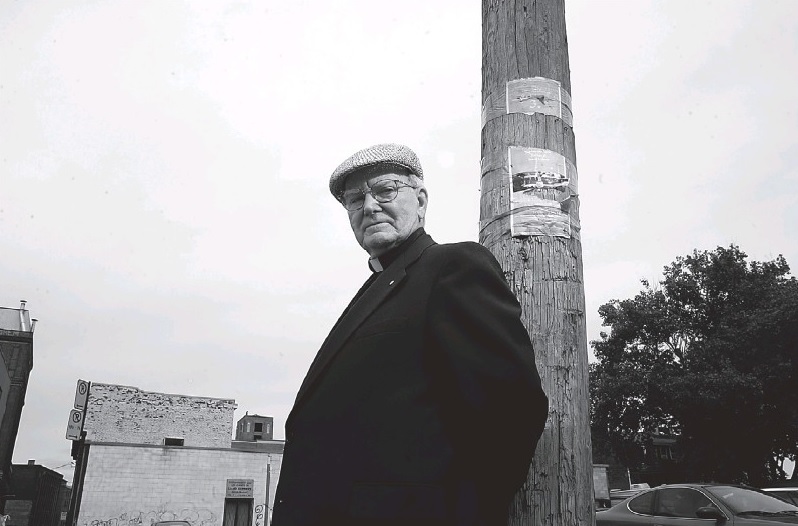
His movie drew parallels with Mary Gallagher’s ghost and the ghost of the displaced neighborhood.
June, 2011, saw an interesting event called Ghosts in the Machine: The Inquest of Mary Gallagher. This site-specific installation was exhibited where the original inquest took place – the old Griffintown police station, which was then a Centaur Theatre workshop and rehearsal space.
According to creator, Alison R. Loader: “Gallagher symbolizes the abject and the forgotten, and contemporaneous accounts of her murder exemplify late nineteenth-century discourses on gender, class, race, and criminal insanity.”
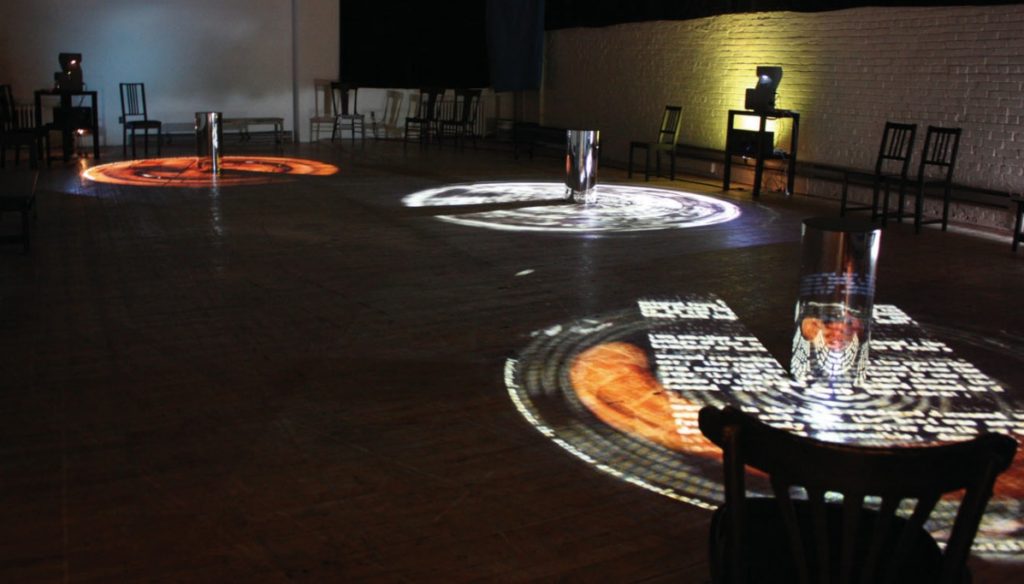
The 2012 anniversary saw hundreds of people on the street corner, as students and performance artists used the opportunity to put on abstract dance performances on vacant lots, as well as other projects.
Denis Delaney, who had been working on a book about Mary Gallagher’s ghost, passed away in 2014. It is unknown if his manuscript was ever completed or published. Prior to his passing he had told a journalist:
“The memory of Griffintown is a nurturing thing for me. It’s a place to go, physically and mentally, when I am trying to work something out. I am one of the future ghosts. I have told my wife that I want to be cremated and to have my ashes sprinkled all over Griffintown.”

Given that both Haunted Montreal and Montreal Ghosts have been reminding clients of the anniversary during ghost tours for several years, many guests are expected on June 27, 2019, to the corner of William and Murray Streets.
Haunted Montreal is pleased to announce that we are taking charge of several events surrounding the return of Mary Gallagher’s ghost.
Firstly, for those who want to experience a comprehensive history of the spirits haunting the Griff, we have added several tours of the Griffintown Ghost Walk as we lead up the anniversary of Mary Gallagher’s murder on June 27th. Tickets are on sale!
Secondly, in collaboration with the AOH (Ancient Order of Hibernians), a Catholic blessing has been arranged on the corner on June 27th at 6 pm to resurrect the tradition started by Father McEntee of praying for Mary Gallagher’s departed soul.
Lastly, on June 27, Haunted Montreal will provide free storytelling on the corner of William and Murray Streets, in both English and French. Every 30 minutes, from 7 – 10 pm, the story will be told in both languages by Haunted Montreal’s professional actors, storytellers and tour guides. While the event is free, tips for the performers are always appreciated.
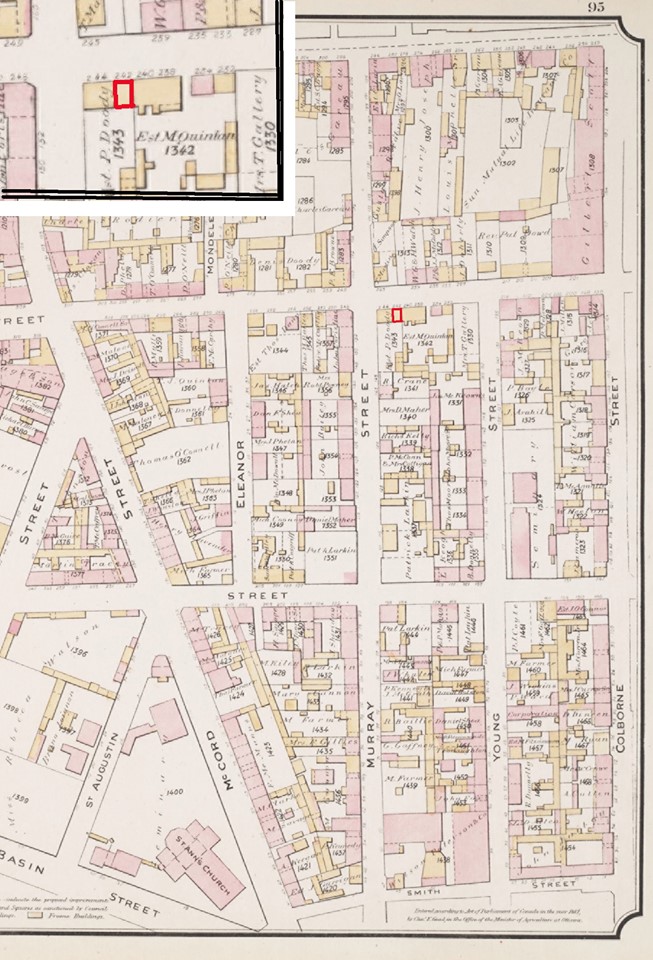
Alan Hustak concludes his remarkable book with the following words: “So long as Griffintown’s spirit remains alive, so too will the spirit of Mary Gallagher.” Unfortunately, the survival of Griffintown’s spirit today is very questionable.
The good news is that City of Montreal recently announced 3 new parks to be created in the Griff, including one to be named Mary Griffin Park.

While Haunted Montreal is thrilled to see the addition of greenspace in the now condo-choked neighbourhood, and the commemoration of Mary Griffin, we are disappointed that the infamous south-east corner of William and Murray Streets was not included as a site of consideration for a park.
Griffintown was redeveloped so quickly, that it is seriously lacking in anything interesting for tourists to visit. Haunted Montreal has been lobbying municipal politicians for years to create “Mary Gallagher Park” on the site of her murder and ghost sightings, not only because it is the right thing to do, but also because we need a permanent space to tell the story on our ghost tours.
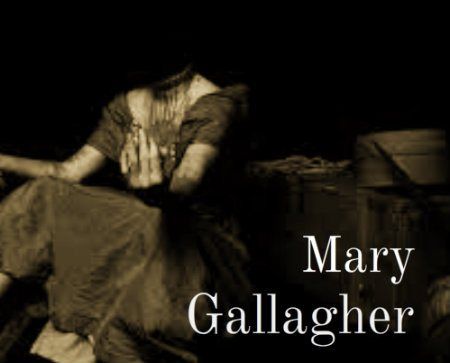
So far, these calls have not been responded to by Montreal City Councilor Craig Sauvé or South-West Borough Mayor Benois Dorais.
As such, Haunted Montreal is asking a favour from our clients and fans.
Please email Montreal Mayor Valérie Plante and ask her to ensure that the south-east corner of William and Murray Streets becomes a commemorative park, and not the site of yet another condominium complex or pavilion.

Mayor Valérie Plante can be emailed at the City of Montreal’s website. You need to fill in a brief form.

Here is a sample text you can cut and paste:
***
Subject: Mary Gallagher Park Proposal
Message: Dear Montreal Mayor Valérie Plante,
[Introduce yourself]Congratulations on doing such an amazing job greening the City of Montreal with so many initiatives such as tree-planting and the enlargement and creation of new parks.
As you may know, the south-east corner of William and Murray Streets in Griffintown is sacred to Montreal’s Irish community because of its connection to Montreal’s most famous ghost story: the ghost of Mary Gallagher. As you may know, her ghost returns every 7 years to the corner, allegedly because she is still searching for her head. Her next appearance is anticipated on June 27 of this year, the 140th anniversary of her murder.
Given that there are almost no tourist attractions in Griffintown, it makes very good sense to preserve the haunted street corner as a commemorative and touristic park for future generations to enjoy.
Furthermore, tour companies Haunted Montreal, Griffin Tours and Irish Montreal Excursions frequently lead tourists to this site, and fear if condominiums or pavilions are built there, it could affect the authenticity and logistics of the haunted and historic walks.
As such, I am petitioning you today to take immediate action to secure the South-East corner of William and Murray Streets in Griffintown for a future “Mary Gallagher Park” to commemorate Montreal’s most infamous legend and ghost story.
[Add any more details you feel are important]Sincerely,
[your name]***
The remarkable Irish history on Montreal’s most haunted street corner should not be erased, but rather be commemorated properly.

Not only would it add a vital tourist site to the culturally desolate Griffintown of today, but would also help preserve one of Montreal’s most infamous legends – the ghost story of Mary Gallagher.
Here’s hoping to see you on the corner of William and Murray Streets on June 27th!
Company News
Haunted Montreal is pleased to announce that our public season of ghost tours is in full operation! These include Haunted Mountain, Haunted Griffintown, Haunted Downtown and the new Haunted Pub Crawl! Tickets are on sale!
Our new Haunted Pub Crawl is led by a professional ghost storyteller and visits three haunted bars. Starting at McKibbin’s Irish Pub in Downtown Montreal on Bishop Street, guests not only learn about many of the haunted drinking establishments in the city, but also hear Montreal’s most infamous ghost stories.

While sipping suds, guests enjoy haunted pubs, spine-tingling Montreal ghost stories and learn about the historical forces that transformed the ancient Indigenous island of Tiotà:ke into Ville-Marie, an austere French colony founded by Catholic evangelists.
After the British invaded, the city became a booming financial center and crime hub, a site of violent rebellion and subversive revolution and finally into Canada’s most haunted city.
Clients hear the paranormal tales behind mysterious McKibbin’s Irish Pub, the famous Sir Winston Churchill, funeral-home-cum-discotheque Club Le Cinq and, of course, Hurley’s Irish Pub, where a ghost known only as the Burning Lady haunts the establishment.
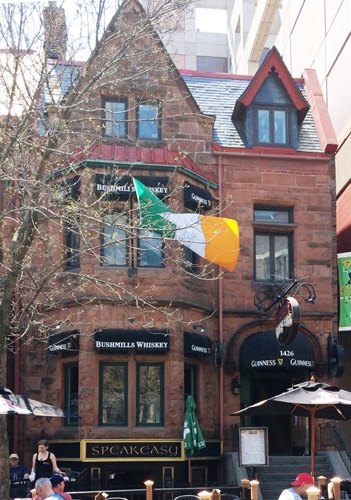
The ghost storyteller regales guests with Montreal’s most deranged and infamous ghost stories, including Simon McTavish, a Scottish fur baron known to toboggan down the slopes of Mount Royal in his own coffin, the ghost of John Easton Mills, Montreal’s Martyr Mayor who perished while tending to typhus-stricken Irish refugees during the Famine of 1847, and Headless Mary, the ghost of a Griffintown prostitute who was decapitated by her best friend in the shantytown in 1879. She returns every 7 years to the corner of William and Murray Streets, still looking for her head!
Join Haunted Montreal on this unforgettable pub crawl, where you can drink some spirits with a spirit, all the while learning about the city’s deranged history and hearing spine-tingling local ghost stories!

For full details, including a description, the starting location and schedule, please visit our web page! Join us at 3 pm any Sunday of the year for a haunted pub crawl in English or at 4 pm in French! Tickets are now on sale!
Haunted Montreal also offers private tours and pub crawls for company outings, school groups, bachelorette parties and all types of gatherings. Please contact info@hauntedmontreal.com to organize a private tour.
We are also pleased to promote a book called Macabre Montreal.
Written by Mark Leslie and Shayna Krishnasamy, it is a “collection of ghost stories, eerie encounters, and gruesome and ghastly true stories from the second most populous city in Canada.

The authors write:
“Montreal is a city steeped in history and culture, but just beneath the pristine surface of this world-class city lie unsettling stories. Tales shared mostly in whispered tones about eerie phenomena, dark deeds, and disturbing legends that take place in haunted buildings, forgotten graveyards, and haunted pubs. The dark of night reveals a very different city behind its beautiful European-style architecture and cobblestone streets. A city with buried secrets, alleyways that echo with the footsteps of ghostly spectres, memories of ghastly events, and unspeakable criminal acts.”
With the introduction written by Haunted Montreal, Macabre Montreal is a must-read for anyone interested in Montreal’s dark side.

Haunted Montreal would also like to thank all of our clients who attended a ghost walk or haunted pub crawl recently!
If you enjoyed the experience, we encourage you to write a review on our Tripadvisor page, something that helps Haunted Montreal to market its tours. If you have any feedback, please email us at info@hauntedmontreal.com so we can improve our visitor experience.
Lastly, if you would like to receive the Haunted Montreal Blog on the 13th of every month, please sign up to our mailing list on the top right of this page.
Coming up on July 13: The Haunted Statue of Jacques Cartier
Towering over Saint-Henri Park is a statue of Jacques Cartier that is rumoured to be haunted. Striking a victorious pose over a fountain adorned with four decapitated Indigenous heads, the monument has been described by community activists as colonial and racist. While some local citizens want the statue removed because it celebrates genocide, others want it gone because it is allegedly haunted. Reports exists of the statue’s eyes following people. Others have heard it cackling maniacally at night and a group of tourists was shocked when one of the beheaded Indigenous decorations began spewing out what appeared to be blood.

Donovan King is a postcolonial historian, teacher, tour guide and professional actor. As the founder of Haunted Montreal, he combines his skills to create the best possible Montreal ghost stories, in both writing and theatrical performance. King holds a DEC (Professional Theatre Acting, John Abbott College), BFA (Drama-in-Education, Concordia), B.Ed (History and English Teaching, McGill), MFA (Theatre Studies, University of Calgary) and ACS (Montreal Tourist Guide, Institut de tourisme et d’hôtellerie du Québec).


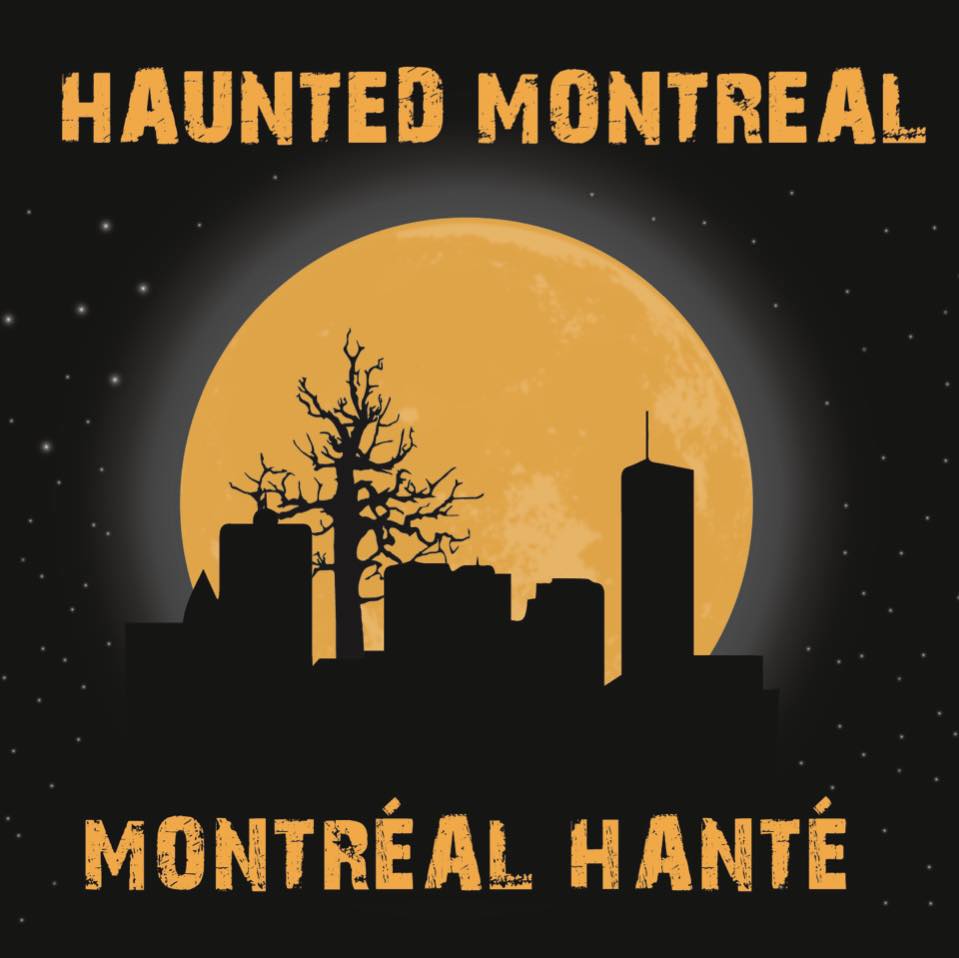
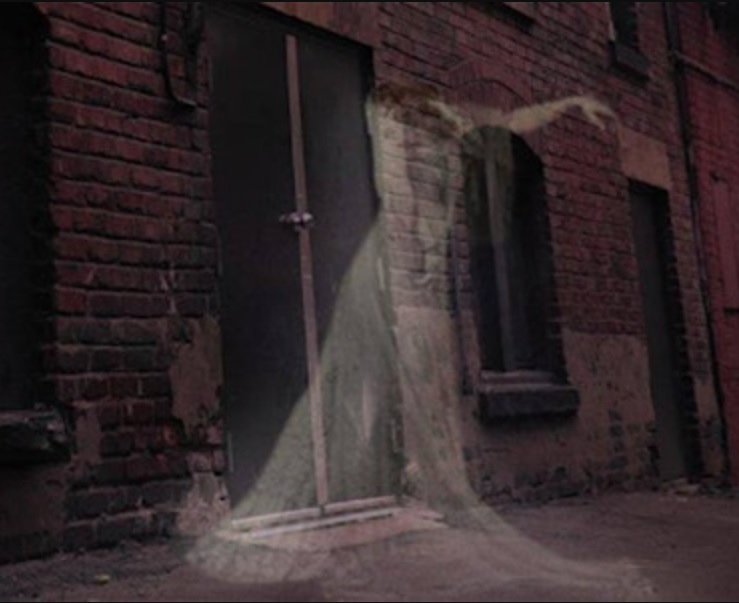
I love your stories!
Keep up the good work and let’s make sure that we will get our Mary Gallagher Park.
Best Wishes!
[…] since-deceased Denis Delaney. He was a specialist in locating the ghost of the decapitated Mary Gallagher, who is said to re-appear every 7th year on the anniversary of her murder on June 27th in […]